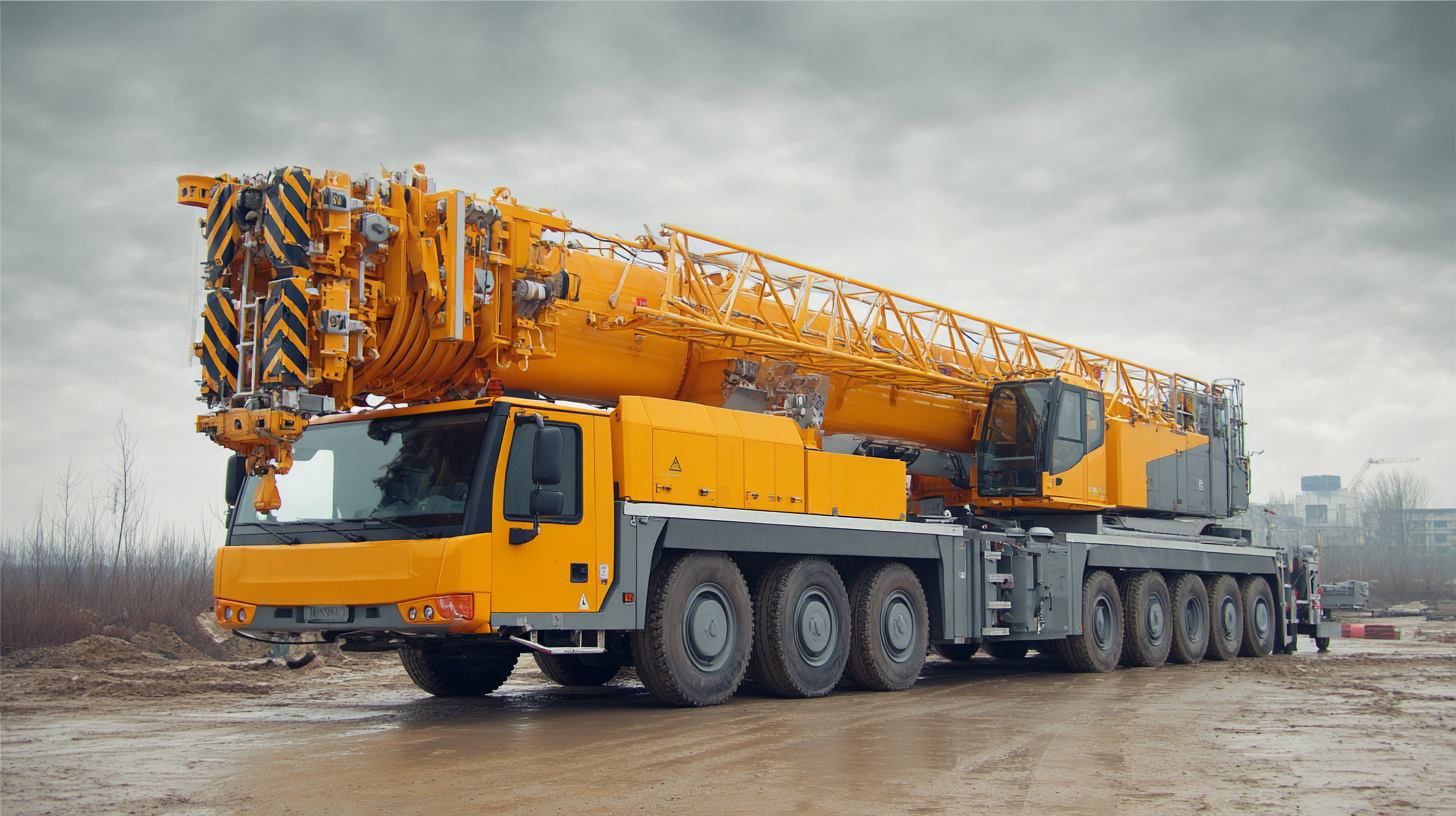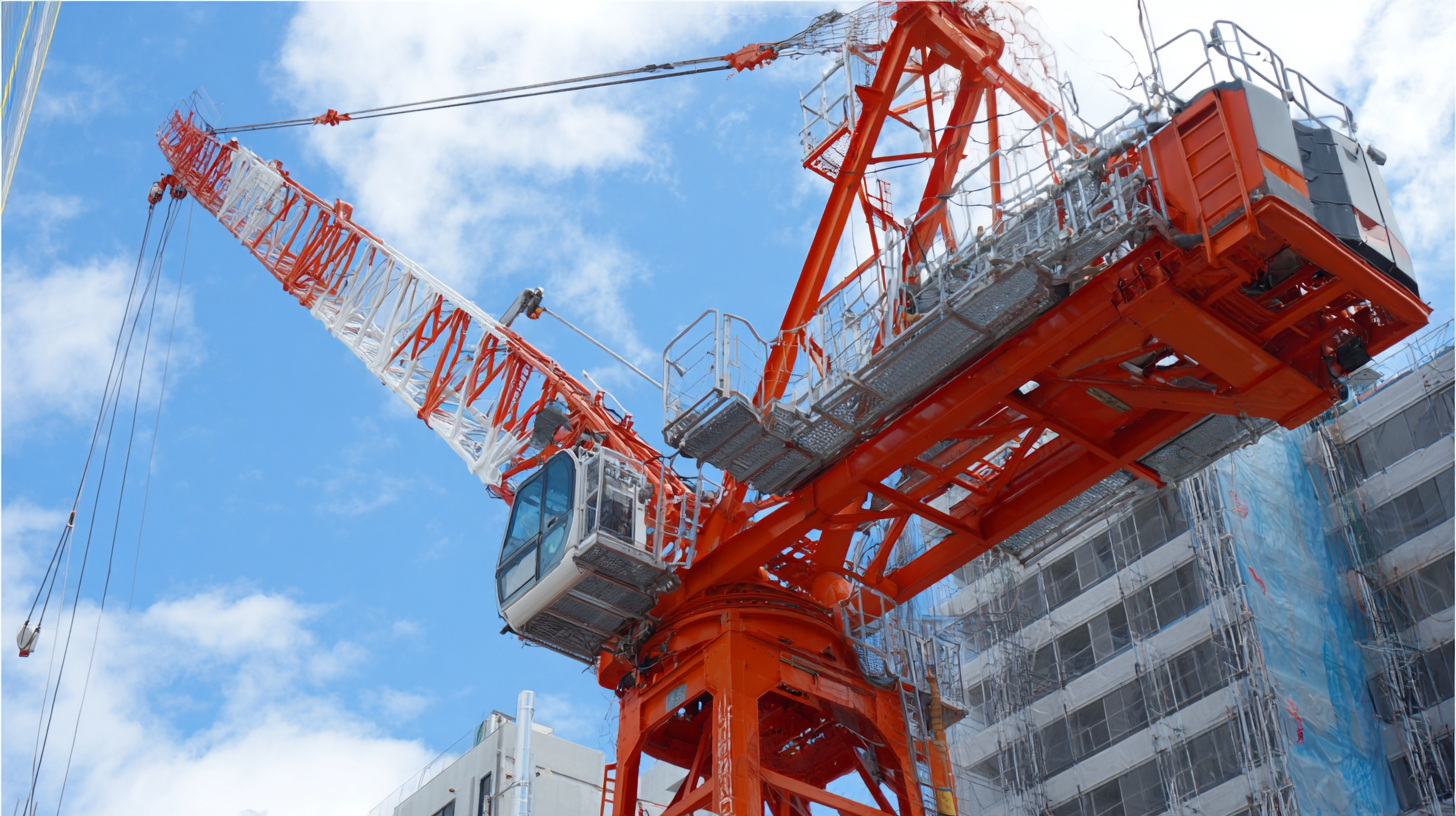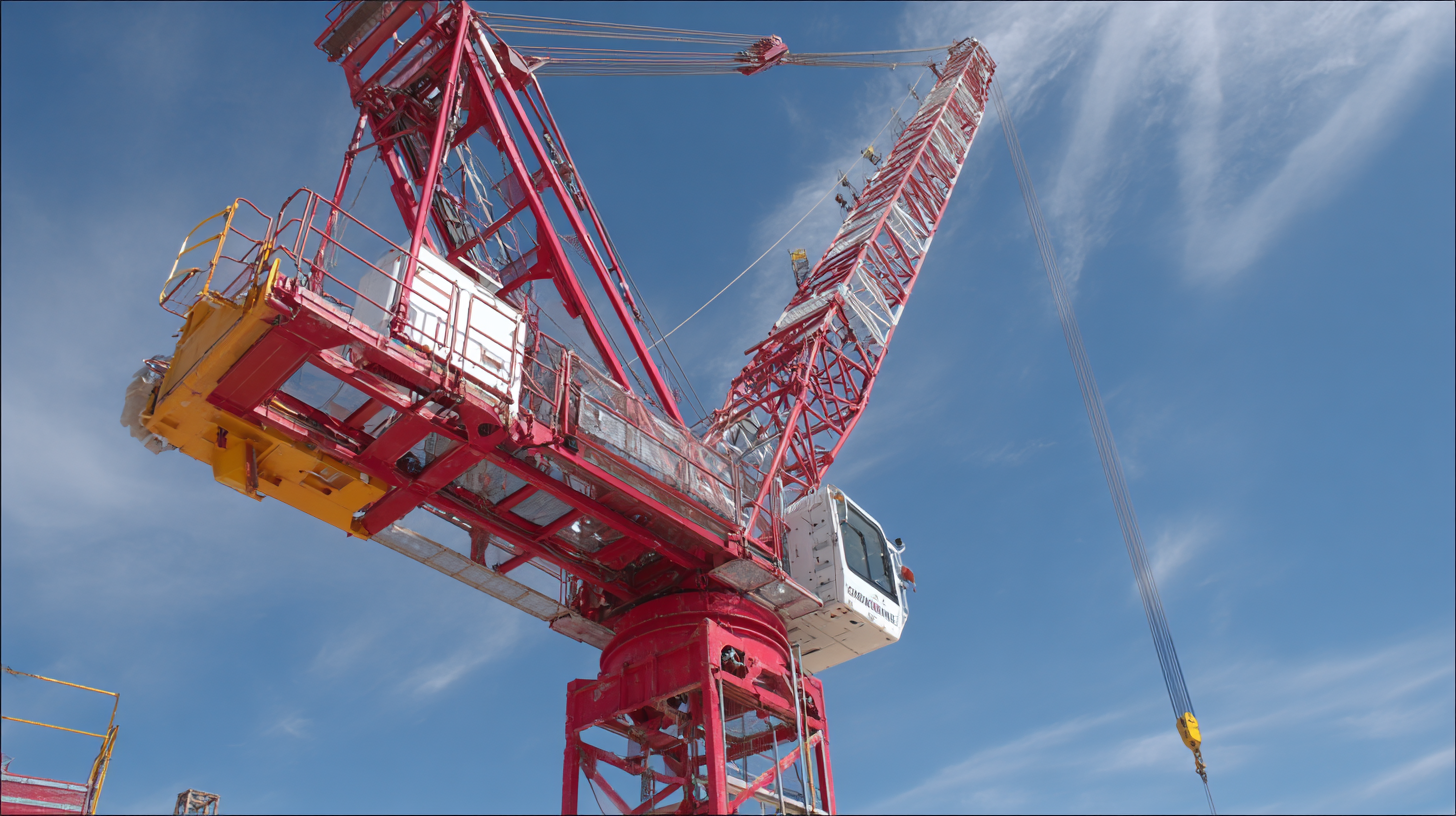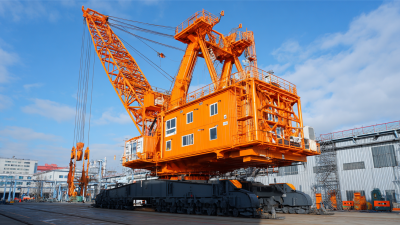Leave Your Message
-
Phone
-
E-mail
-
WhatsApp
Choosing the right slewing crane for your construction needs is a critical decision that can significantly impact the efficiency and safety of your project. Slewing cranes, known for their ability to rotate and lift heavy loads with precision, offer versatility in various construction environments.

However, with numerous types and specifications available, selecting the ideal slewing crane requires careful consideration of several factors including the weight of materials, the height and reach needed, and the layout of the construction site. Understanding your project's unique requirements and the operational capabilities of different slewing cranes will help ensure that you make an informed choice. This guide will provide essential insights into the key aspects to consider when evaluating slewing cranes, helping you to optimize your construction processes while maintaining safety standards and maximizing productivity.
When selecting the right slewing crane for a construction project, it is essential to understand the various types available and their specific applications. Slewing cranes can be categorized primarily into tower cranes, mobile cranes, and crawler cranes, each offering distinct advantages. According to a report by ResearchAndMarkets, the global tower crane market was valued at approximately $4.9 billion in 2020 and is projected to grow significantly, driven by urbanization and infrastructure development. Tower cranes are ideal for high-rise buildings due to their ability to reach great heights and handle heavy loads effectively.
Mobile cranes, on the other hand, are preferred for projects requiring flexibility and rapid movement between sites. A study published by MarketResearchFuture highlights that the demand for mobile cranes is projected to increase due to the growth of the construction industry, particularly in developing regions. Crawler cranes offer stability on uneven terrains and are particularly useful for heavy-lift operations. As construction projects become more complex, understanding the strengths and limitations of each type of slewing crane will help project managers optimize efficiency and safety on-site, ensuring the right equipment is utilized for specific tasks.
When selecting a slewing crane for construction purposes, several key factors must be taken into consideration to ensure optimal performance and safety. One critical aspect is the crane's lifting capacity. According to a report by Grand View Research, the global construction crane market is projected to reach USD 15.3 billion by 2025, highlighting the importance of choosing a crane that can handle the specific weight of materials needed for your project. For instance, if you anticipate lifting heavy machinery or substantial construction materials, opting for a slewing crane with a higher load capacity will be essential.
Another vital element is the crane's reach and height capabilities. Projects located in tight urban environments may require cranes with a compact design that can operate efficiently in restricted spaces. A 2022 report by Research and Markets mentions that slewing cranes with longer booms and higher lifting heights are increasingly favored for large-scale construction projects. Furthermore, the terrain and worksite conditions should also be assessed, as specific types of slewing cranes are better suited for uneven surfaces or rugged landscapes. By carefully evaluating these parameters, you can ensure that you select the right slewing crane tailored to your construction needs.
| Factor | Description | Importance Rating (1-5) |
|---|---|---|
| Load Capacity | Maximum weight the crane can lift. | 5 |
| Reach | Distance the crane can extend to place loads. | 4 |
| Mobility | Ability to move around the job site. | 4 |
| Height of Lift | Maximum vertical height the crane can lift. | 5 |
| Operating Environment | Conditions where the crane will be used, e.g., indoors, outdoors. | 3 |
| Control Mechanism | Type of controls: manual, remote, or automated. | 4 |
| Safety Features | Inherent safety mechanisms like overload protection. | 5 |
| Cost | Purchase and maintenance costs. | 3 |
| Brand Reliability | Reputation and reliability of the crane manufacturer. | 4 |
When selecting the right slewing crane for your construction project, assessing load capacity and reach requirements is critical. According to a report from the U.S. Bureau of Labor Statistics, cranes account for approximately 40% of all construction fatalities, emphasizing the importance of safety as well as suitability for the job. The first step is to determine the maximum load the crane must handle. Most slewing cranes can lift loads ranging from 10 tons to over 1,000 tons, so understanding the specific requirements of your job site is essential. This will not only ensure operational safety but also enhance efficiency as overloading can lead to equipment failure and accidents.
Moreover, reach requirements must be considered to ensure that the crane can access all necessary areas of the site. A study by the International Crane and Transport indicated that cranes with longer booms (up to 100 meters) can effectively service larger sites with significant vertical and horizontal demand. It is also advisable to account for the working radius when calculating reach, as this affects the crane's operating stability and performance. By carefully assessing these factors, construction managers can select a slewing crane that will optimize performance and safety on the job site.
 When selecting a slewing crane for construction projects, evaluating site conditions and space limitations is crucial. The first step is to assess the ground stability and surface material where the crane will be positioned. Soft or uneven terrain may require additional stabilization measures, such as utilizing mats or outriggers to distribute the crane's weight effectively. Furthermore, understanding the height and load-bearing capacity of the ground is essential to avoid accidents during operation.
When selecting a slewing crane for construction projects, evaluating site conditions and space limitations is crucial. The first step is to assess the ground stability and surface material where the crane will be positioned. Soft or uneven terrain may require additional stabilization measures, such as utilizing mats or outriggers to distribute the crane's weight effectively. Furthermore, understanding the height and load-bearing capacity of the ground is essential to avoid accidents during operation.
Next, consider the operating radius and maneuverability of the crane based on the site layout. Restricted areas, such as those near existing structures or utilities, can limit crane movement and may necessitate a more compact model with a reduced swing radius. Additionally, examining overhead obstacles, such as power lines or signage, can also influence the type of slewing crane chosen. Properly mapping out the site and anticipating challenges will ensure the crane operates safely and efficiently within the constraints of the construction zone.
When considering the purchase of a slewing crane, it's essential to conduct a thorough cost analysis to ensure that both the initial investment and long-term operational expenses are factored into your budget. Slewing cranes, particularly in construction, come in various designs with a wide range of lifting capacities. For example, reports suggest that the tower crane market is expected to grow significantly, with a focus on designs such as top and bottom slewing cranes, which have distinct operational applications and cost implications. The average cost for a new slewing crane can range substantially; thus, understanding the specific requirements of your construction project is critical.

Tips: One effective strategy to optimize your budget is to analyze your project needs and choose a model that aligns with those specifications rather than go for the highest specification. Additionally, factor in maintenance costs, which can affect operational expenses significantly over the crane's lifespan. Regular maintenance not only prolongs the life of the equipment but can also prevent costly downtime.
Budgeting also involves assessing the overall market trends. The expected growth in the tower crane market indicates increasing competition, which could lead to better pricing strategies from manufacturers. This insight allows you to potentially negotiate better purchase terms while aligning your financial predictions with regional market conditions. Further, understanding the nuances in the lifting capacities—whether below 5 metric tons or higher—can help you avoid overspending on equipment you may not need for your specific projects.






